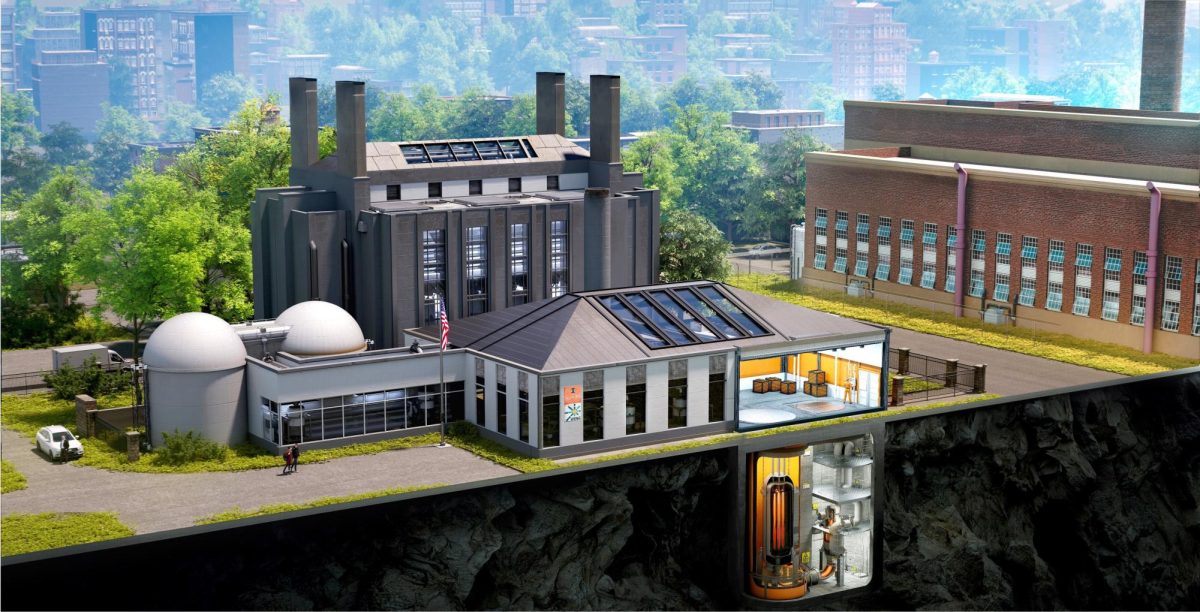Last updated on April 16, 2024 at 04:54 p.m.
The University joined forces with the Ultra Safe Nuclear Corporation to create and research the use of nuclear microreactors in clean energy.
Officially known at the Illinois Microreactor Research, Development and Demonstration Center, researchers under Caleb Brooks, professor in Engineering, are attempting to bring academic enrichment and a cleaner future of energy to the market.
Tomas Kozlowski, professor in Engineering, recently discussed his work and the potential benefits of the microreactor project at a seminar hosted by the Illinois Sustainable Technology Center on Oct. 25. Kozlowski outlined the current findings and what researchers hope microreactors will do for the future of sustainable energy.
Microreactors are small-scale versions of the large-scale reactors seen in a typical nuclear plant, Kozlowski explained. Along with its transportable size, microreactors are factory assembled, self-adjusting and are constantly being designed by multiple startup companies.
Get The Daily Illini in your inbox!
A core facet of the project is accessibility and education for students hoping to learn about nuclear power, based on the research center’s website.
Tim Grunloh, the principal research scientist and associate director of the project, hopes that a new microreactor on campus will generate student interest.
“We want to get students to experience using a research reactor and invite industry to come see research reactors,” Grunloh said. “We want to motivate investment in this and other technologies in the future.”
In addition to education and training, the project has a total of six main pillars that guide its mission and research. This includes safeguards and security, licensing and policy, integrated energy systems, control and operations.
Kozlowski also explained the project’s hope to integrate microreactor technology into the general market, finding that this technology is expected to be targeted towards institutions that want to invest in fossil fuel reduction, resilience and reliability.
The sustainability and infrastructure microreactors provide were also a motivation for the program to work on college campuses like the University of Illinois. Campuses are large energy users with a workforce large enough to meet the needs of the energy project, Kozlowski explained.
“Many departments are reaching for microreactors for their convenience,” Kozlowski said.
The University has been home to its own reactor, named the TRIGA Mark II, for 38 years. However, according to Kozlowski’s presentation, no new University-based research reactors have been notable in over 30 years.
With the introduction of a microreactor on campus, professionals and interested students can see demonstrations of the technology and creation of clean energy at a more at-scale size.
Kozlowksi then emphasized the increased safety of microreactors, which cool naturally in comparison to the active cooling needed for typical nuclear systems.
“This new class of reactors that’s being developed has been shown to work and to be safe in several cases,” Grunloh said. “The technology itself is not new, but the way that it’s being developed and put together and packaged is new.”
Kozlowski went on to highlight the importance of further research and development regarding microreactors. This includes the study of security, both cyber and physical, along with high-temperature water purification processes.
“For cybersecurity, all analog operators will be completely disconnected from the network, deterring future hackers from getting sensors,” Kozlowski said in the seminar.
With the partnership’s current timeline, operations on the University’s microreactor are set to begin in 2028. In order for demonstrations and general research to begin, two licenses for site preparation must be submitted in 2024 and 2026.
According to the project’s website, projects such as the evaluation of the microreactor’s performance in the University’s microgrid and the use of microreactors in the production of hydrogen and fertilizer production are currently underway.
The Illinois Microreactor Research, Development and Demonstration Center was also recently featured in Nuclear News magazine for its mission to bring professionals and students together for the peaceful use of nuclear power.







